When I am looking for fresh and unique ways to use vegetables, spices and ingredient combinations, I have a few trusted chefs that I turn to.
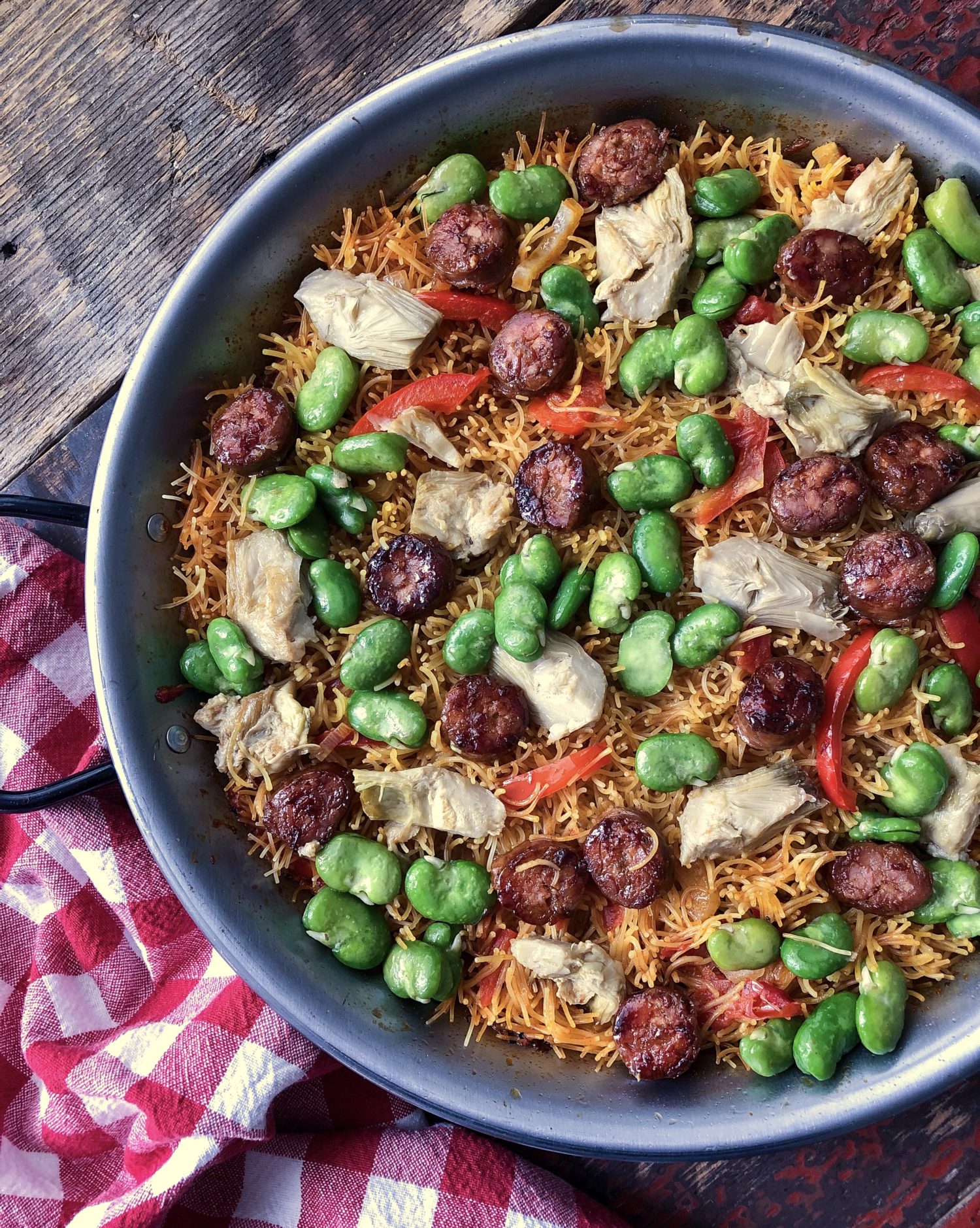 Yotam Ottolenghi, Sabrina Ghayour, Paula Wolfert, Nigella Lawson, and Diana Henry to be exact. And they always come through for me. They all tap into heritage and cultural cuisines from the middle east and the mediterranean, so I can count on loads of fresh veggies and spices to be used in their recipes.
Yotam Ottolenghi, Sabrina Ghayour, Paula Wolfert, Nigella Lawson, and Diana Henry to be exact. And they always come through for me. They all tap into heritage and cultural cuisines from the middle east and the mediterranean, so I can count on loads of fresh veggies and spices to be used in their recipes.
This time around I was looking for something to do with my stash of fresh Spring fava beans. I had done the Mint and Fava Bean Salad, made a hummus, and even put them into a crustless Persian Quiche. What else could I make with them this year?
Out came the cookbooks. When I found this amazing recipe in ‘How to Eat a Peach‘ by Diana Henry, I was completely mesmerized. She showcases the beans, along with other fabulous veggies in a Fideua. What the heck is a Fideua? Pronounced ‘Fi-day-wa’. I asked the same thing. I did some research, and discovered that it is a Spanish pasta paella of sorts. The paella pan is used, all the classic ingredients like saffron, fennel, tomatoes, peppers and paprika are there. But instead of using paella rice, a small vermicelli noodle is used. Actually, after having made this, I will go out on a limb and say that it is even easier than making a traditional rice paella. The noodles cook up in no time, and you know when they are ready, because they actually ‘stand up’ in the pan. I wasn’t sure this would happen for me, but low and behold, they stood up!
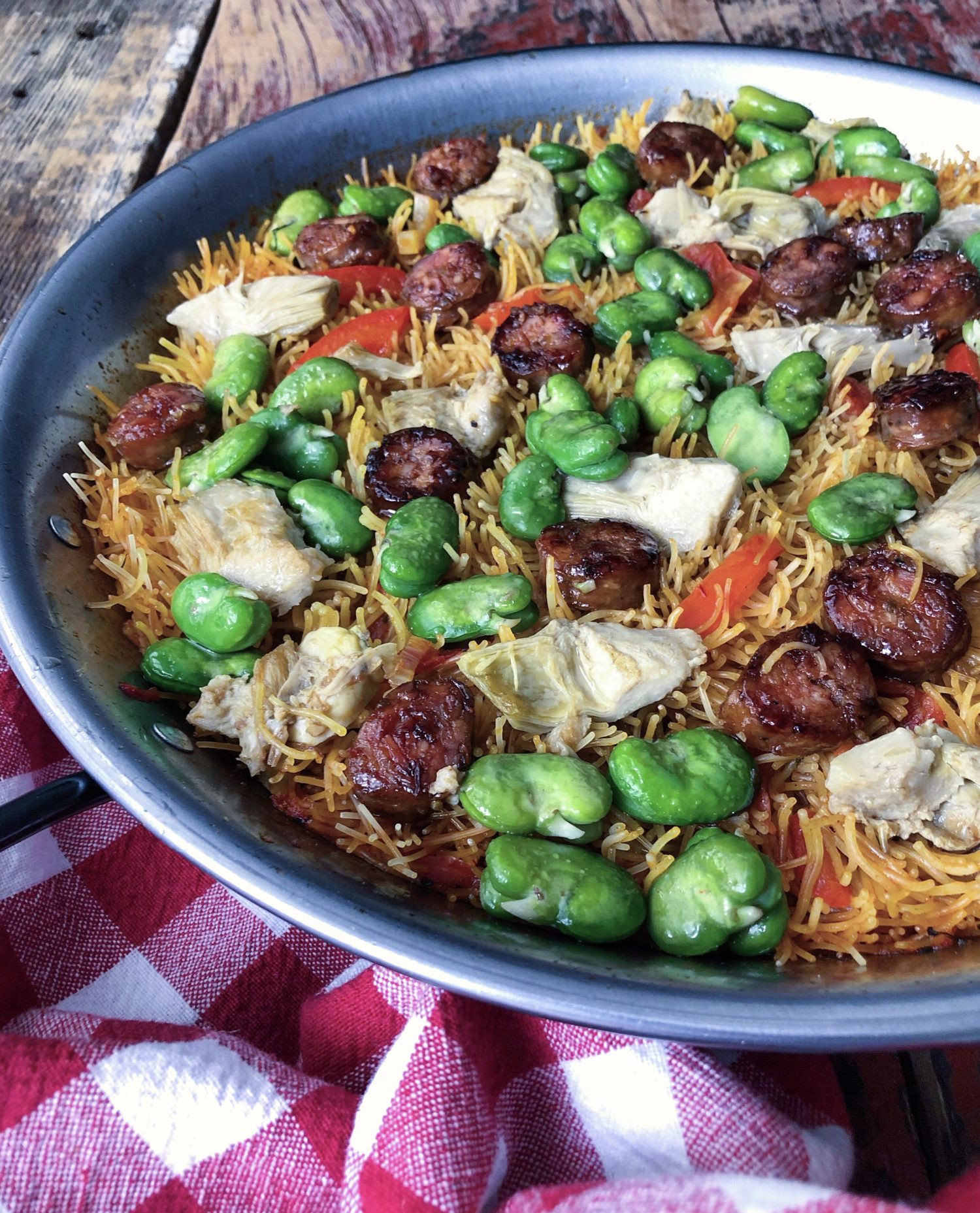
Diana’s version is a vegetarian Paella. She features the fava beans, tomatoes, peppers, onions, fennel and artichoke hearts. And it is a totally perfect mediterranean combination. Knowing Jim, I decided to sauté up some Spanish chorizo and add them in at the end as well. I also did add some garlic with the onion, and lemon at the end.
Now, what if you don’t have fava beans kicking around? Or you only have frozen ones? No probs. Thaw, steam and add them at towards the end of cooking. If you would rather use fresh or frozen peas, go right ahead. Add some sliced mushrooms with the peppers and tomatoes. Do you have a hankering to use up some zucchini, add it in chunks in the last few minutes of cooking.
What if you would like to have it more meat-centric? While the paella is simmering away, you could be grilling up skewered cubed chicken thighs to add at the end. You could do the same with skewered shrimp!
What I love about this meal (or any paella for that matter) is that you can make it year round. On the stove in the winter, and on the grill in the summer. If you are making a large amount, and are using a larger paella pan, the grill is the perfect place to cook it! It actually fits, and doesn’t just hang over the largest burner on your range. Plus, while you tend to that paella pan out on the patio, sipping some Spanish Cava, Rosé or a toothy Rioja, you get to tempt the neighbours with the amazing aromas coming from your grill!
Like most stews or braises, this is a pretty simple layered dish. But you do need to start with a wide, broad and shallow cooking vessel. A paella pan is perfect for this because there is more real estate on the bottom than on the sides. This gives everything cooking contact with the heat. If you use a deeper pot of sorts, there will always be ingredients sitting on top of others, and the end result is more of a stew or soup than an evenly cooked meal. Paella pans are relatively inexpensive, but if you don’t want one, use a wide braiser or skillet. Here is a great link to some paella pans if you are interested. My sister has a few, in different sizes, depending on how many she is feeding. Mine is a 12 inch which feeds four comfortably, six in a pinch. I’ll probably get a 15 inch one for entertaining a larger group. Not that I really entertain more than 8 at a time. If I wanted to actually make paella for more than that, I’d use two pans. Have you seen those really huge paella pans that feed crowds?! You need an open fire and a big iron stand to cook with one of those!
You start with sweating the onions and garlic, and then adding the bell peppers and chopped tomatoes. Once they soften and turn a little thick, you add the fennel and their fronds, and then the smoked paprika. Then the stock and saffron are added. Give it all a good, aromatic stir!
Then the noodles are added. They will simmer away, and absorb that flavourful stock. Huge Disclaimer: DO NOT STIR. If you stir the noodles as they cook, they will become stick and clump together. I easily found fideos noodles in a Spanish/Mexican grocery store here in Kensington Market. But if you simply cannot find them, don’t despair. Vermicelli or even thin spaghettini noodles will work. Just break them into 3/4 inch pieces first. Or here is another option, it’s the same noodle I used.
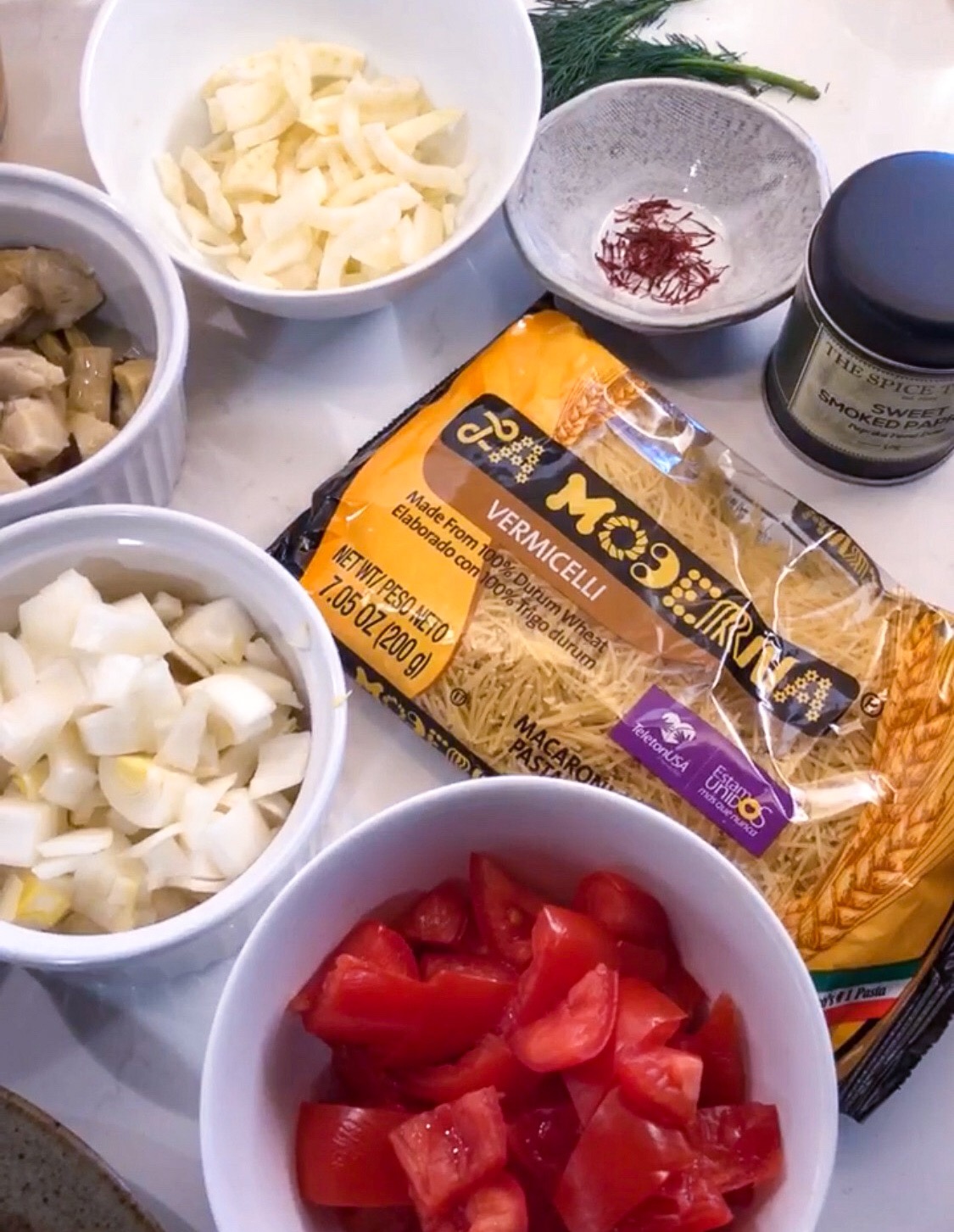
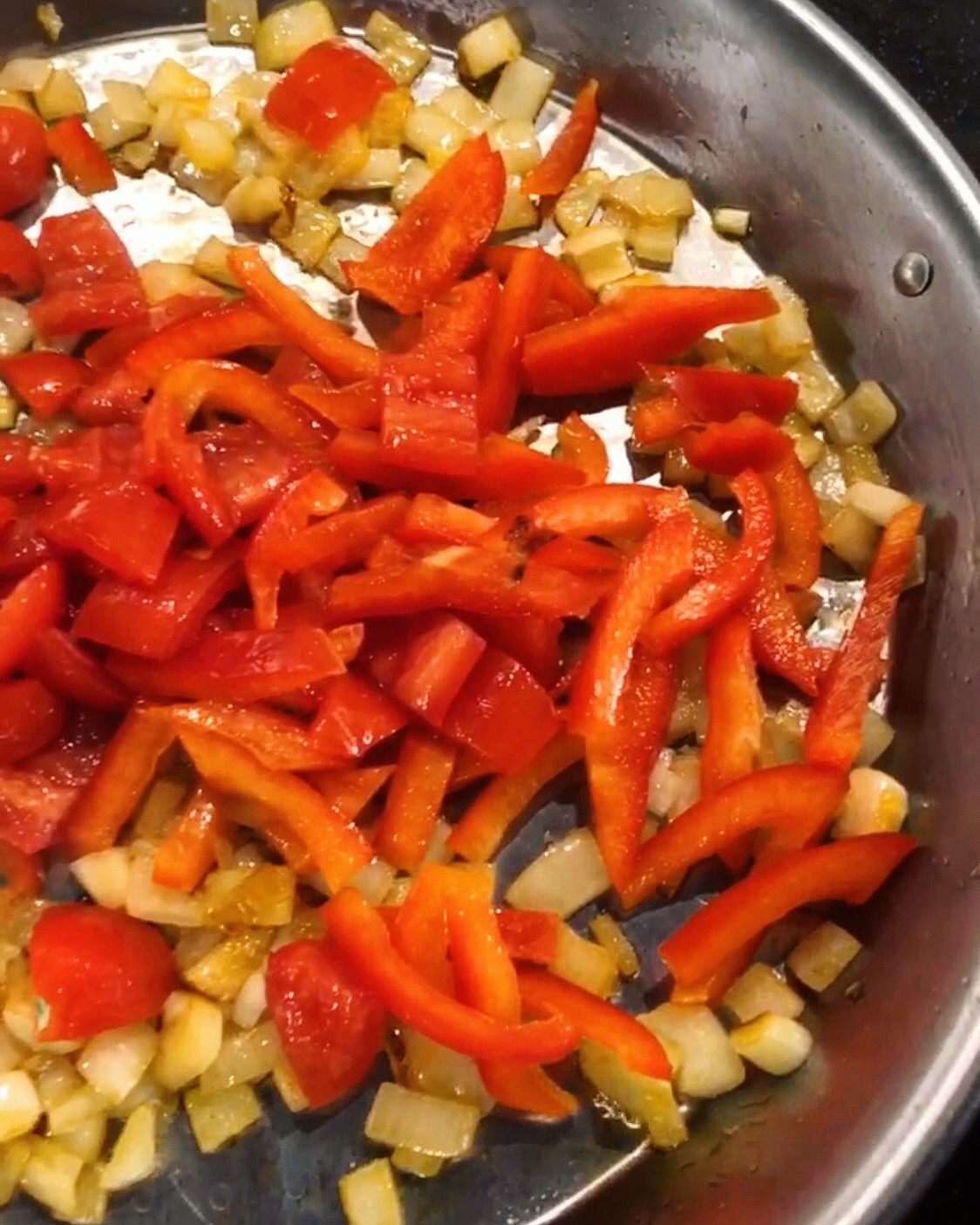
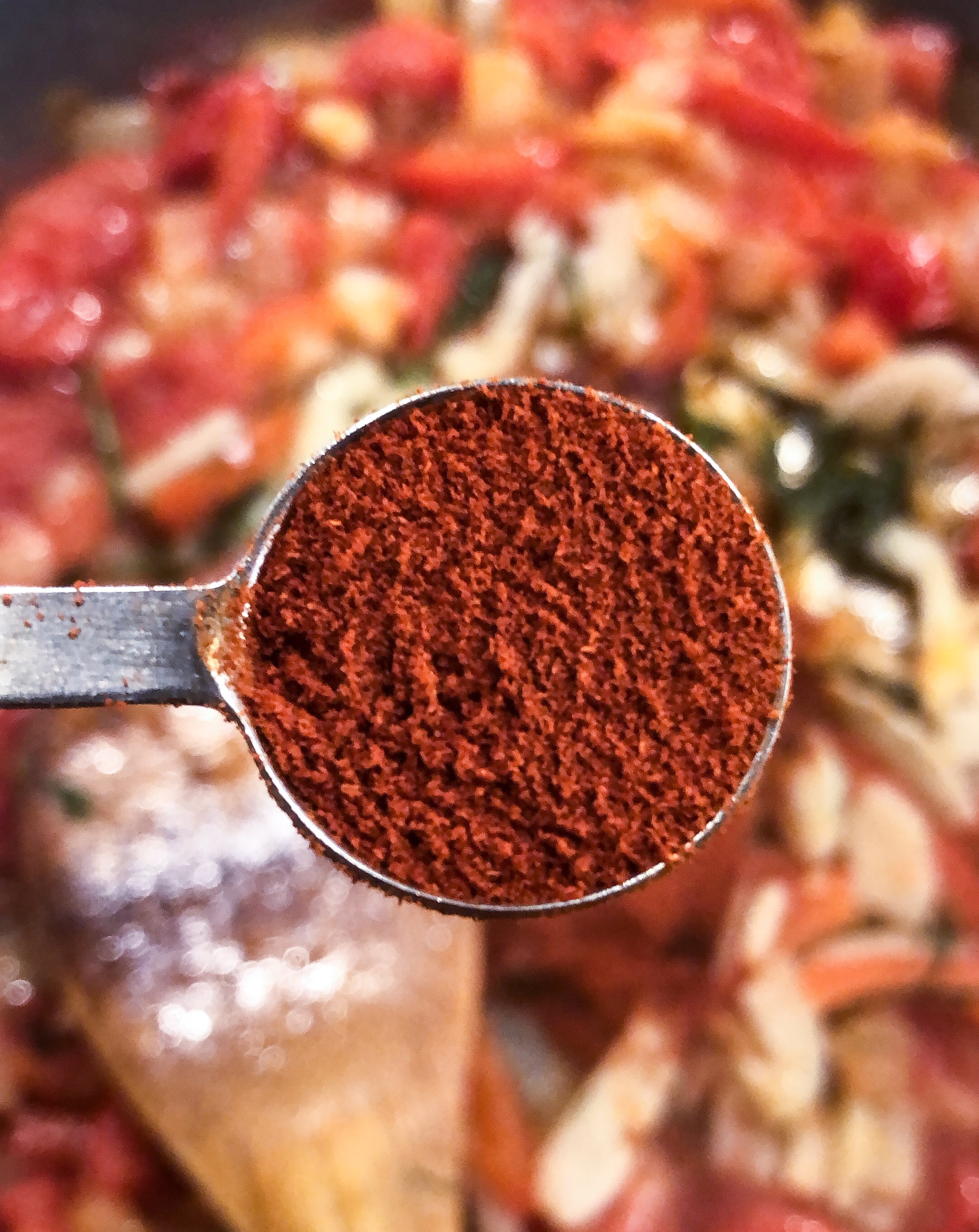
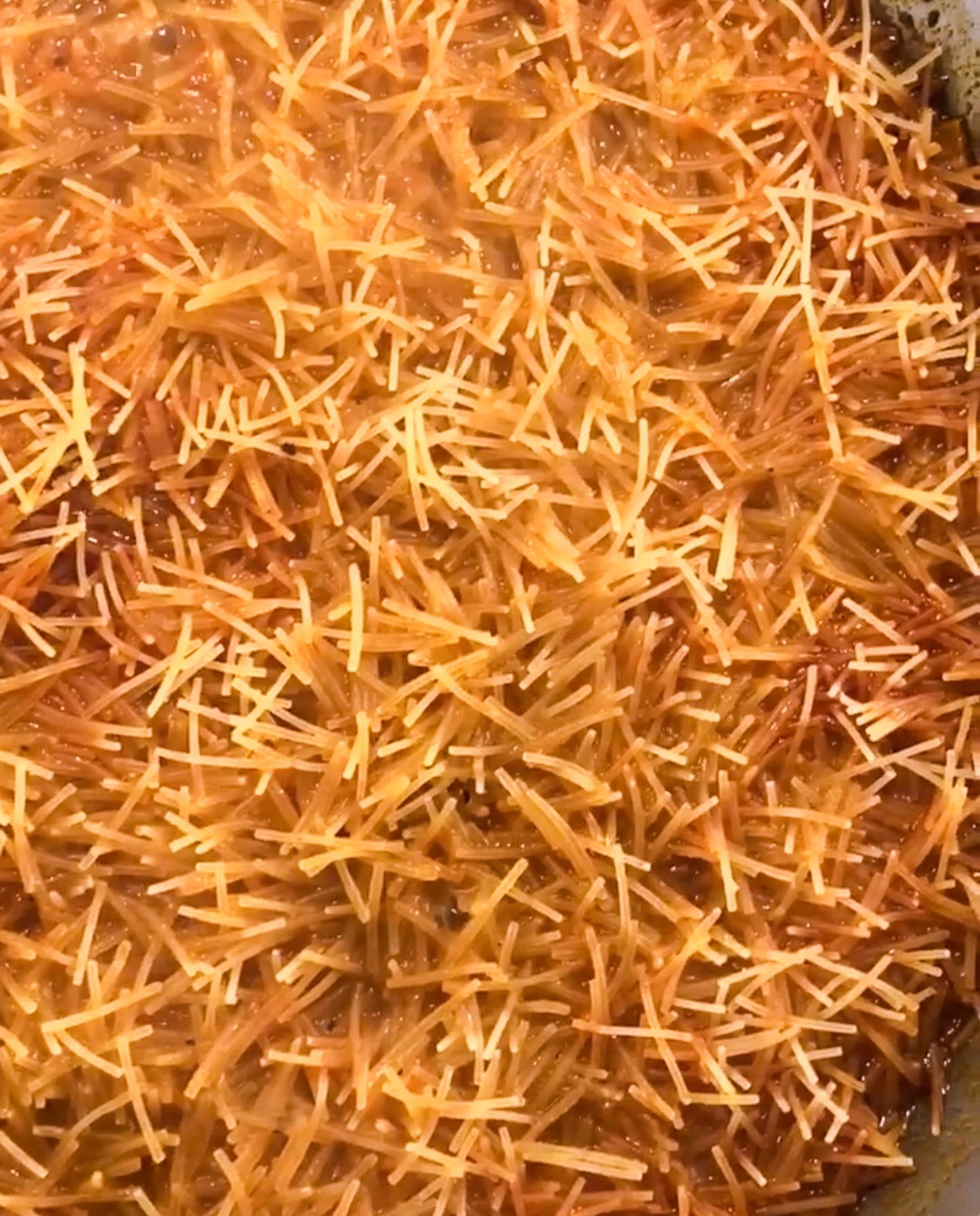
Towards the end of cooking, the artichoke hearts are added in. Then the steamed or sautéed fava beans get scattered over. When all is done and ready to serve, squirt some fresh lemon all over for a totally brightened and heightened flavour experience.

If you are doing this on the grill, why not add a few skewers of marinated shrimp and chicken thighs and let them grill beside the pan. Then when all are done, place them both decoratively all around the paella, and serve. I did this but with chorizo this time around. All I did was take a couple of fresh chorizo links, slice them into bite sized cross sections, and sautéed them up. They got added when I added the fava beans to re-warm with the rest of the dish.
I’m telling you, this is a dish fit for company!!! The flavours are amazing. The pasta has the most wonderful texture (as long as you leave well enough alone and avoid stirring) It is colourful thanks to the red peppers and the green fava beans. And leftovers are pretty tasty as well! Crack open a good Spanish red, slice up a crusty loaf, and your house will be party central all summer long.
Love Jen

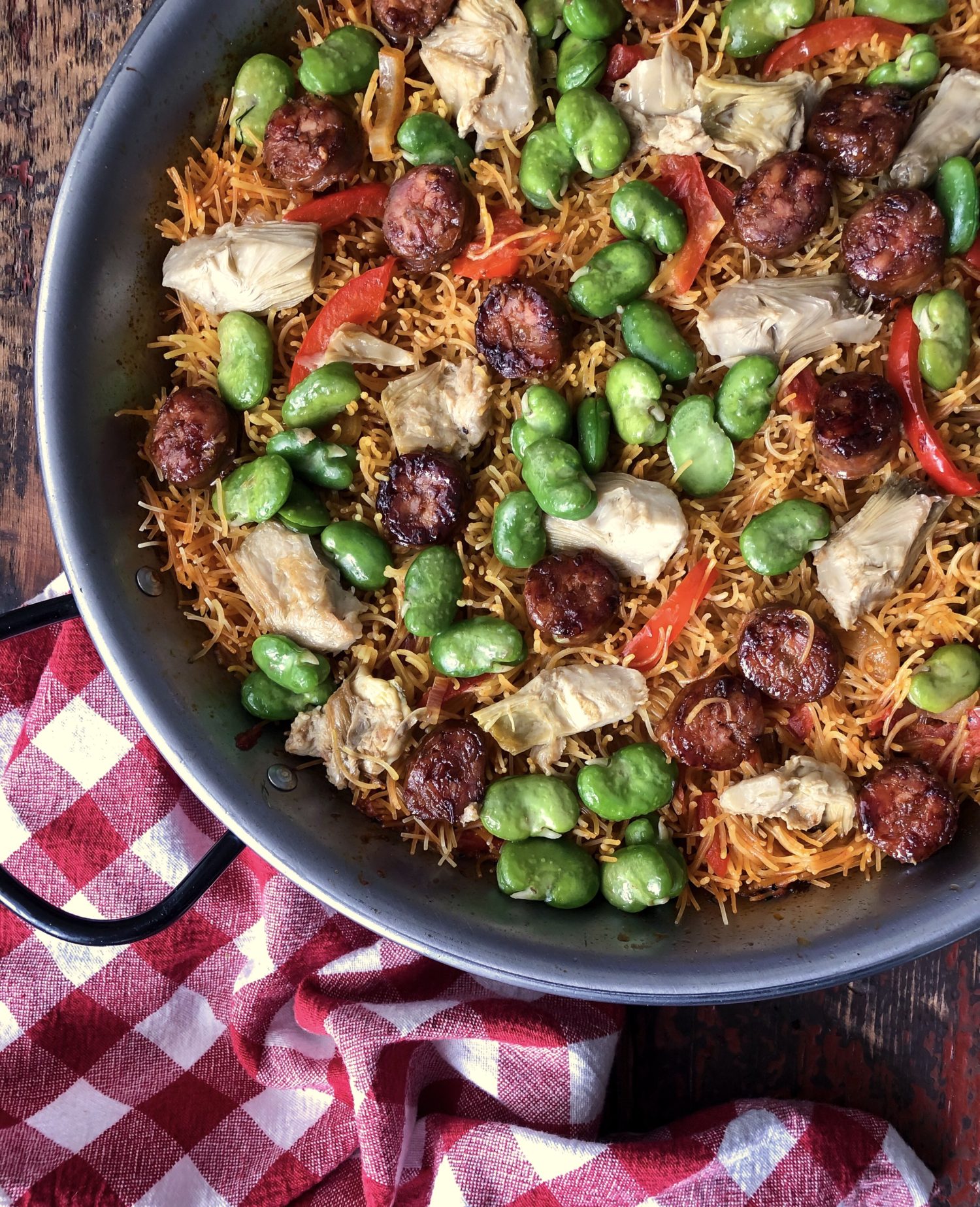

Spanish Fideua, Pasta Paella
All the fun and traditional flavours of a classic rice paella, but using noodles! Saffron, smoked paprika, and fennel fronds create the aroma. Vegetables reign supreme in this dish, but it is easily adapted for the addition of meat if you so desire.
Ingredients
- 1 small or 1/2 medium fennel bulb plus the fronds
- 1 lb (10 oz) fava beans in the pod, enough to yield 2 1/2 cups fresh beans (you can also use frozen thawed)
- 3 tbsp extra virgin olive oil
- 1 onion small diced
- 1 garlic clove minced
- 1 red pepper seeded, coarsely chopped
- 3/4 lb (350 grams) plum or roma tomatoes seeded, coarsely chopped
- 1 tbsp smoked sweet paprika
- 1/4 tsp chilli flakes or cayenne pepper
- 4 cups chicken or vegetable stock to keep it vegan, use vegetable stock
- really generous pinch of saffron threads
- kosher salt
- fresh cracked black pepper
- 12 oz fideos noodles if you can't find these or don't have a Spanish grocers nearby, you can totally use thin spaghettini noodles, broken into 1 inch pieces or a bit smaller
- 1 lemon for squeezing over the finished dish
Instructions
-
Trim the frond tops from the fennel, chop them, and set aside
-
Halve the fennel lengthwise and remove the tough outer layer.
-
Trim off the base and chop the rest. Set aside
-
Remove the beans from the pods and cook in boiling water for about 3 minutes. Drain in a colander and run cold water over them. Let them cool and then remove the outer skin to reveal the bright green bean. Set aside.
-
Heat 2 tbsp of the the olive oil in a broad, wide shallow pan, about 12 inches across. If you don't have a paella pan, use the widest skillet or braiser you have.
-
Cook the onion over medium heat till just turning soft. Add the garlic and cook till the onion is pale gold.
-
Add the bell peppers and tomatoes and cook, stirring until soft and thickening. Reduce the heat if anything is starting to scorch on the bottom of the pan.
-
Add the fennel and the chopped fronds and cook for 5 minutes.
-
Add the paprika, chili flakes or cayenne, and stir. Cook for 2 minutes.
-
Add the stock and the saffron. Bring to a boil, stirring so that the saffron infuses the stock. Taste and season with salt and pepper. Start with 1/2 tsp of each.
-
Add the noodles, scattering them around the pan evenly.
-
Reduce the heat to a gentle simmer and let everything cook for about 12 minutes. During this time the noodles will absorb the stock and become soft. It is important not to stir.
-
About 4 minutes before the 12 minutes are up add the artichoke hearts to the fideua, distributing them around the pan.
-
While this is cooking, quickly sauté the fava beans in the remaining 1 tbsp of olive oil in a skillet. Season them with a bit of salt and pepper.
-
Add the fava beans to the fideua. Scatter them evenly around the pan. Try not to stir the pasta too much. This will release starches and turn everything sticky.
-
You know the noodles are done when they stand up!!
-
Give the entire dish a generous squeeze of fresh lemon and serve with crusty bread. And a Sparkling Spanish Cava or a toothy Roja!
Recipe Notes
You could also add sliced mushrooms towards the end of cooking down the tomatoes and peppers.
If you want to add meat: sauté some fresh chorizo, sliced into bite sized pieces. Or why not skewer some shrimp or chicken and grill along the fideua if you are cooking this outside on your grill. Add them towards the end with the fava beans. If you want to use peas instead of fava beans, that's great as well.
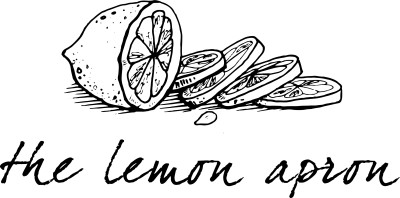
This looks like a wonderful dish!! In Greek we call those short vermicelli noodles fide or fithe- wonder if there’s any relation there.
Hi Joanne, Yes, the words are so similar, aren’t they!? Just shows how food and words travel, right?